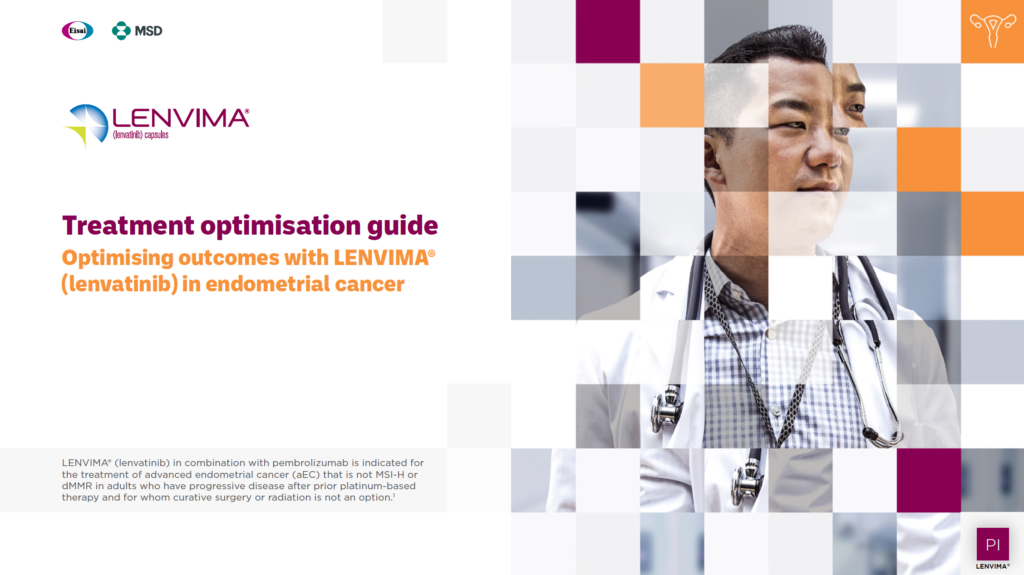Treatment optimisation guide
Optimising outcomes with LENVIMA (lenvatinib) in endometrial cancer
This treatment optimisation guide has been developed to support you in the management of your patients on a LENVIMA®-containing regimen and to address LENVIMA®-induced AEs as early and effectively as possible, allowing patients to get the most out of the treatment.
This guide to managing adverse events on a LENVIMA®– containing therapy supports you to achieve optimal outcomes of your endometrial cancer patients:
Provides advice on when to continue, interrupt or discontinue LENVIMA® treatment
Based on AE severity as defined in the NCI-CTCAE grading guideline2
Informs about the recommended starting dose and dose modifications of a therapy with LENVIMA®
The recommended starting dose for LENVIMA® is 20 mg/day. As part of an AE management strategy, flexible LENVIMA® dosing enables 3 dose reductions from 20 mg to 14 mg to 10 mg to 8 mg.1
Supports optimal adverse events management under a LENVIMA®-containing therapeutic regimen
Safety and Time to first onset of AE data included
You can use the LENVIMA’s® Treatment Optimisation Guide by clicking the button below:
LENVIMA® (lenvatinib) in combination with pembrolizumab is indicated for the treatment of advanced endometrial cancer (aEC) that is not MSI-H or dMMR in adults who have progressive disease after prior platinum-based therapy and for whom curative surgery or radiation is not an option.1
Abbreviations: AE: adverse event; NCI CTCAE: National Cancer Institute Common Terminology Criteria for Adverse Events.
References:
1. Prescribing information LENVIMA® (lenvatinib), www.swissmedicinfo.ch
2. National Cancer Institute. Common Terminology Criteria for Adverse Events (CTCAE); v5.0, Bethesda, MD: National Cancer Institute 2017. NIH publication 09-5410.
CH-LENA-23-00018/2023-09




